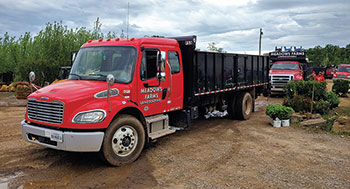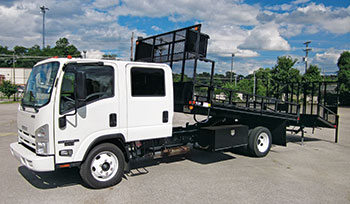
Design/build vehicles often function like office spaces for team members with boots on the ground. Much of occupants’ days are spent in or around them, materials and supplies are usually within reach and when the workday is done, the spaces lie vacant until the next workday rolls around.
Keeping these spaces organized is important to maintain efficient operations. We spoke with a few pros to find out how they keep their “offices” in order.
Compartmentalize
Implementing separate boxes and containers within a truck helps ensure items are easy to find and ready to grab when crews need them.
“Consider these things when laying out racks and storage boxes on a landscape body: safety, ergonomics and theft prevention,” says Jeff Smith, new and used truck sales representative at commercial truck dealer Neely Coble Co.
For service bodies, James Muiter, product line manager at Reading Truck Body, a manufacturer of service truck bodies, suggests using drawer units that bolt into a compartment as a way to store hand tools.
“Not only does it encourage you to put the tools back where they go, but you can also see at a glance if a tool has been left behind on the job site,” he says.
Use what you have
Often, trucks come equipped with systems already in place to help with organization.

For example, Meadows Farms in the Washington, D.C., metro area opts for built-in tarping systems.
“On our older trucks, we just had a loose tarp, but it’s just a matter of safety and also the ease of tarping a truck more quickly (when you buy a truck with a built-in tarping system),” says Dave Reed, vice president of Meadows Farms.
For platform, dump and landscape bodies, Muiter says bolt-on toolboxes incorporated under the platform can help make tools accessible and allow the cab to stay locked.
He adds that some trucks include a “possum belly” compartment between the frame rails, which can be a good place to keep shovels and rakes.
When choosing a vehicle, Dan deMont, vice president of Juniper Landscaping in Fort Myers, Fla., suggests thinking beyond just organization.
“No. 1, (landscape pros) need to think about efficiency, and No. 2, does (the vehicle) have more than one use? They need to be thinking about the versatility of the equipment they buy,” he says.


